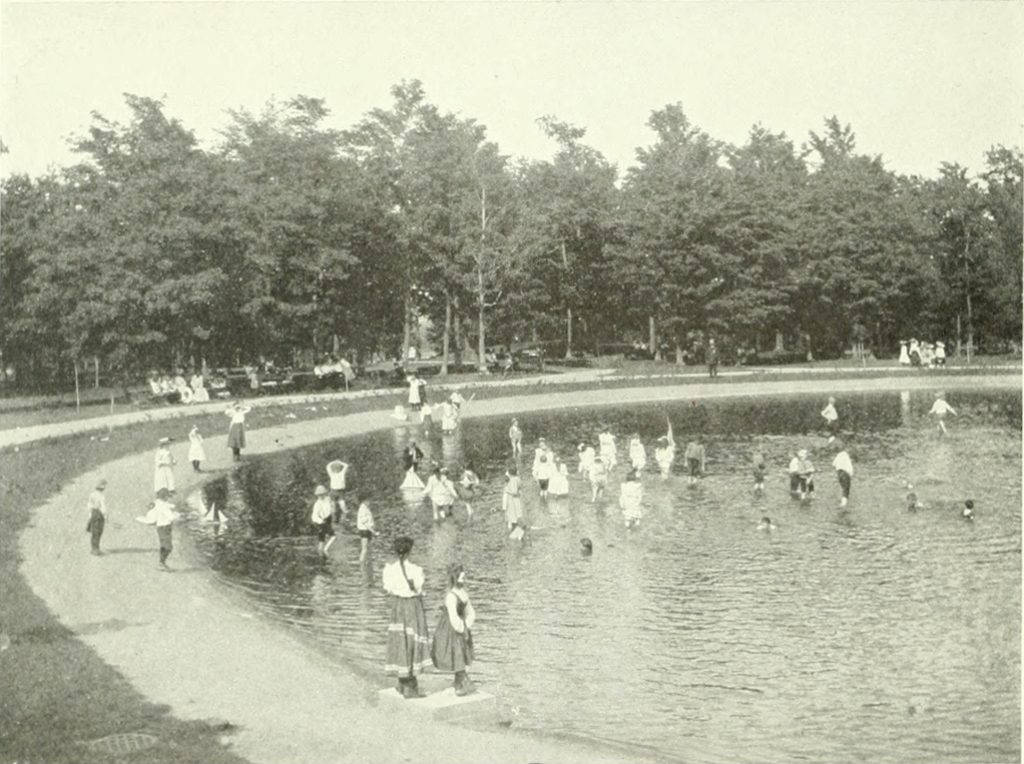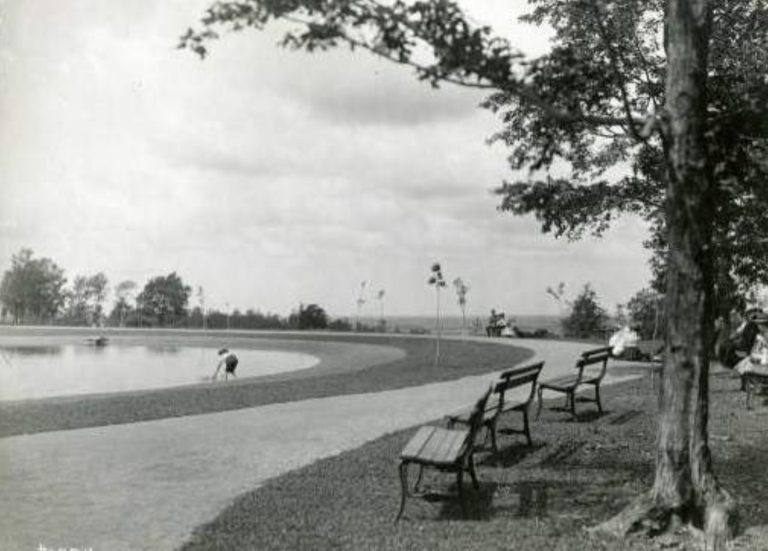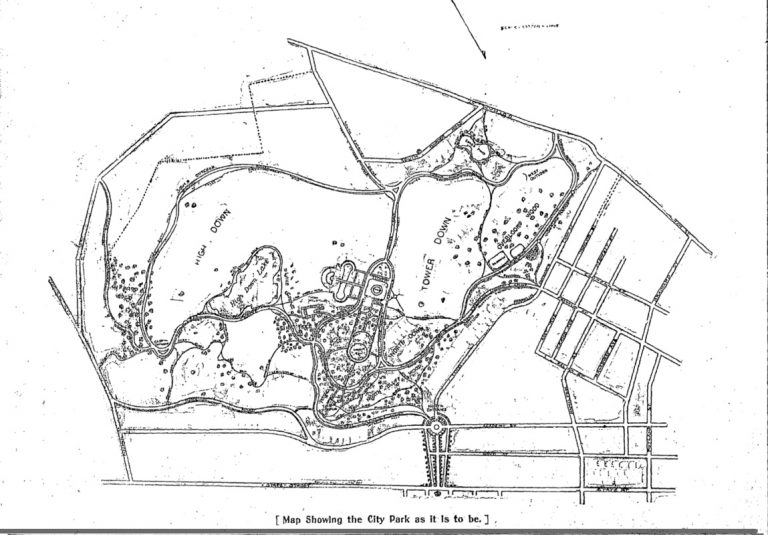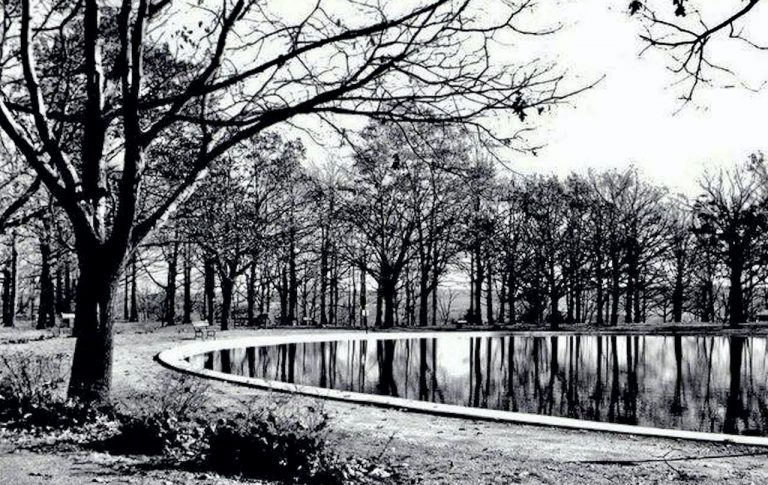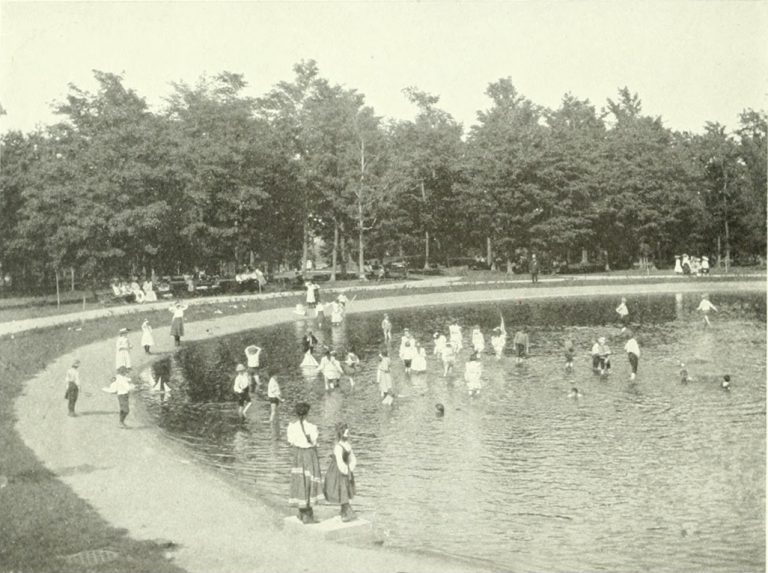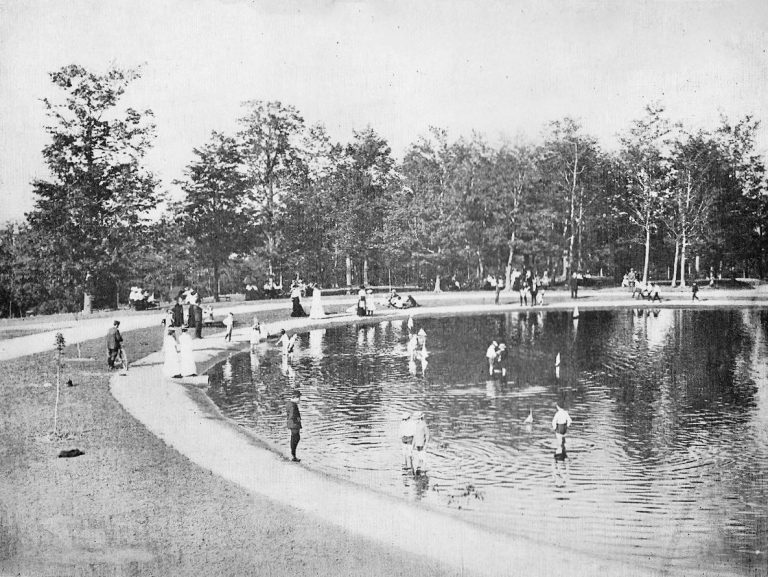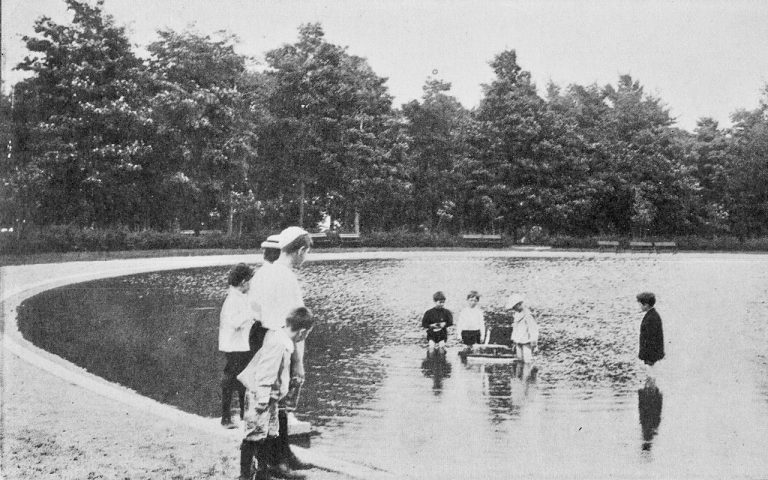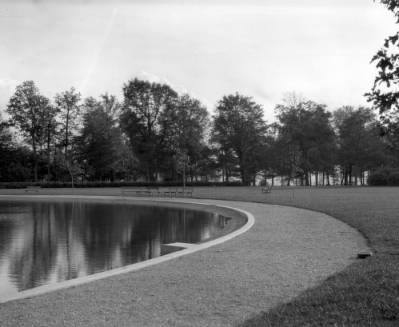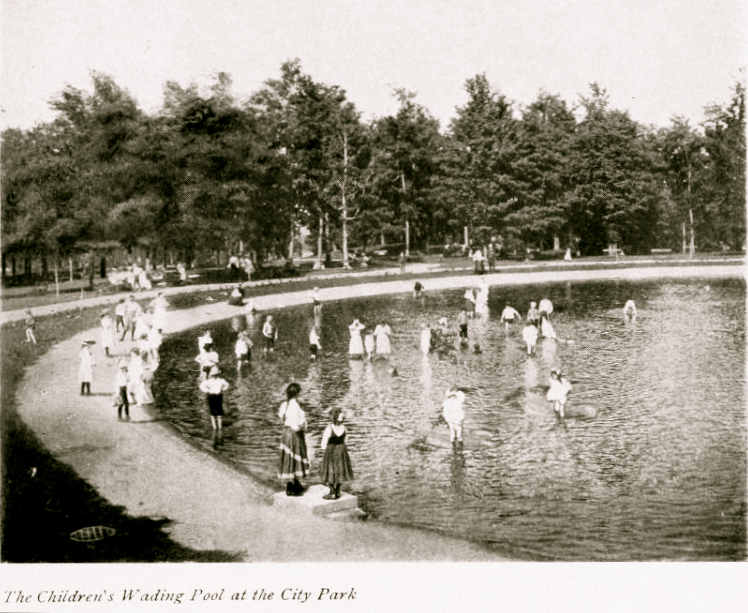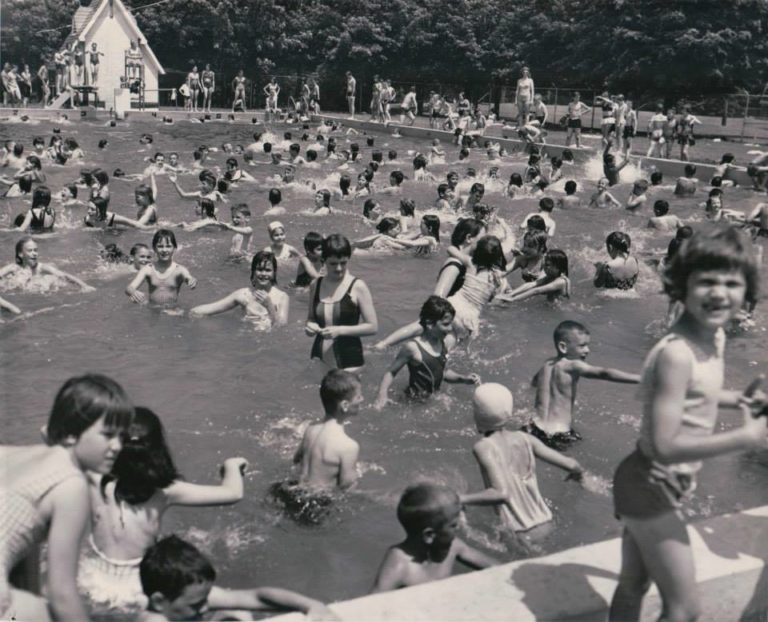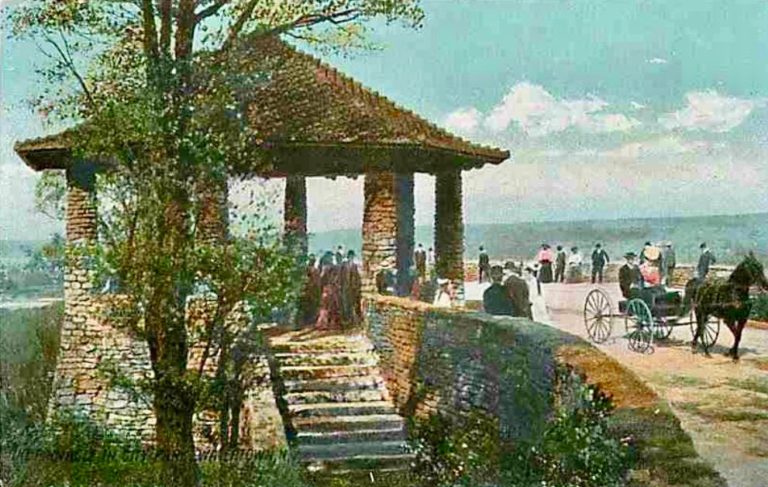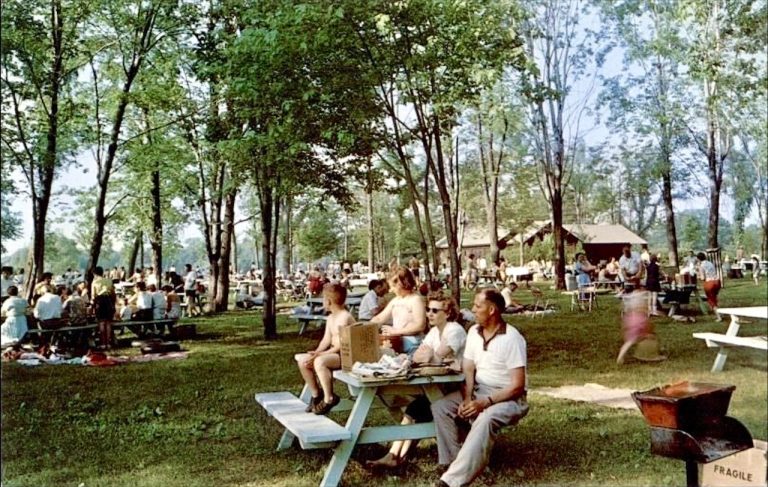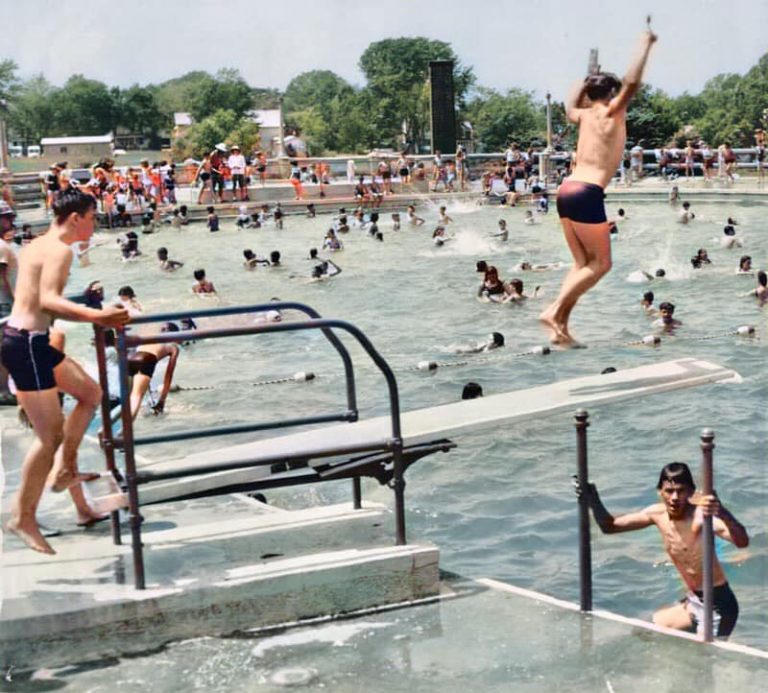The Thompson Park Wading Pool Opened In 1901
Long before the original swimming pool was constructed in 1924, there was the Thompson Park wading pool built in what was considered the children’s area of the park. Initially expected to open in time for summer in 1901, delays wouldn’t allow for the pool to be completely filled with water until late October. Oddly enough, its first official use would actually be for ice skating in early December.
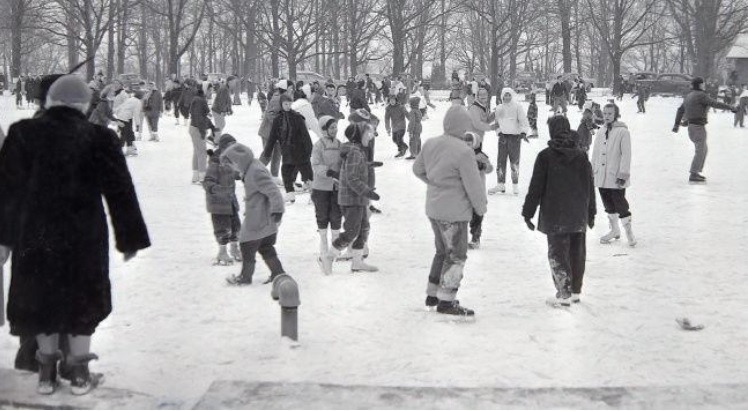
The wading pool and park project, in general, began in 1899 when a trustee, Henry D. Goodale, received instruction and funds from the then-anonymous donor to purchase “The Pinnacle,” a small mountain above State Street, without knowing for whom or what purpose. Goodale was then instructed to purchase all of the hills, from State to Washington Streets, amounting to nearly 700 acres at $100,000.
This would provide for the beginnings of City Park as it was known in its first couple of decades, finally renamed Thompson Park after its benefactor, John C. Thompson, president of the New York Air Brake. Only after his death on September 1, 1924, did the city reveal who the mystery financier had been and move to rename the park in his honor.
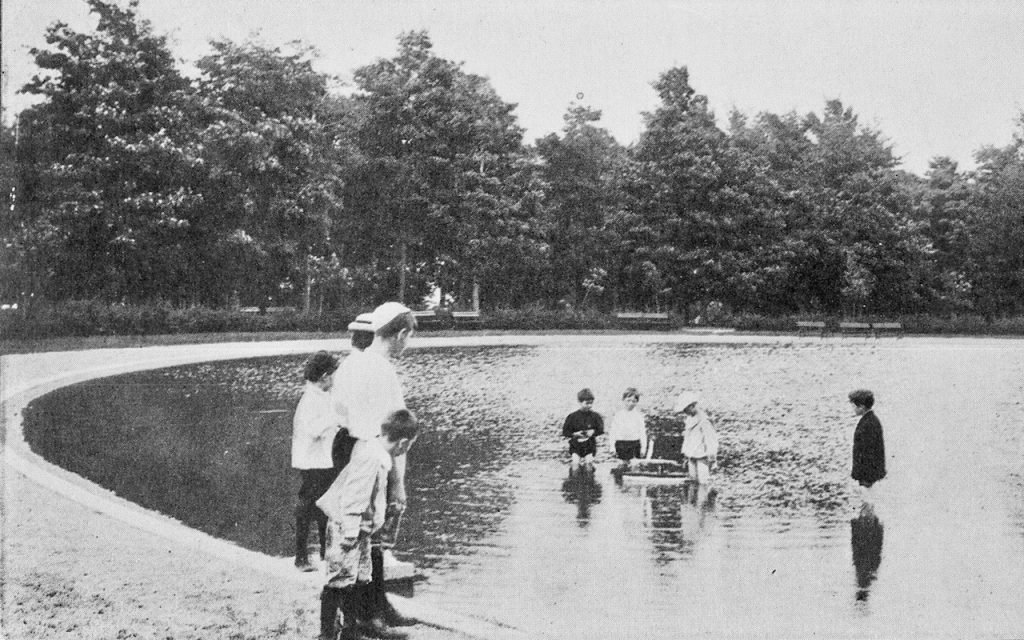
One of the earliest projects at City Park was preparing the wading pool so that children would receive “immediate consideration.” In February of 1901, Goodale, now acting as superintendent of various projects, had about twenty teams drawing clay from nearby Huntingtonville to the top of the Pinnacle, where the wading pool would be. Work would continue for a few more days at that point until being suspended until spring.
The wading pool would be 150 feet in diameter in the children’s playground, with an open pavilion standing before it. As of April 6, it was intended to have the children’s section of the park completed by July 1, and work progressed initially at a rapid pace, starting with excavating the land and compacting its bottom with a thick layer of clay. Closely packed, fine gravel would be added on top, and a layer of fine sand would be added before the pool was ready for water.
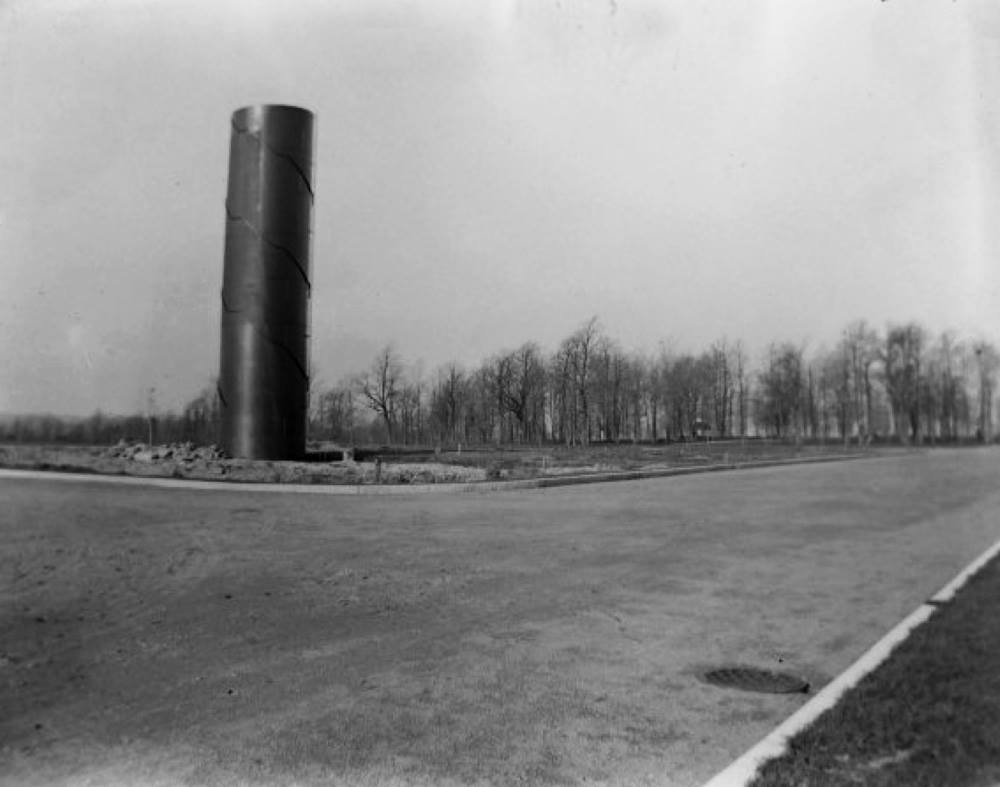
The water would need to be piped up from a water main pipe crossing the foot of the hill at State Street. The new section up the hill and to the pool was being laid concurrently with work on the pool itself. The Watertown Daily Times would remark on its progress on May 17–
Excavations were made to solid rock, providing for a depth of about four feet at the deepest point. Upon this was placed, thoroughly prepared, six inches of the fines bine clay, hauled last winter from James Gray’s pt near Huntingtonville. On top of this was spread find gravel, smoothly laid, and above all, a layer of the finest beach sand. By the rarest luck a pit of this sand was found on the crest of the hill, near the tower site.
With work on the roadway leading from the wading pool to the Pinnacle having begun and most of the pipe laid, it was hoped that the wading pool would soon be ready for use. Unfortunately, the first attempt to fill it wasn’t successful. It was soon realized that an auxiliary pumping station would be needed to force the water from the city main off State Street up and over the slope.
An 18-horse-powered boiler, built by Watertown Steam Engine Company, would be located in the woods at the intersection of water pipes where an 8″ pipe would run to the new 200,000-gallon water tower under construction. The boiler would operate the pump and force water up the hill to the water town, and on October 26, 1901, after the tower’s completion, the wading pool would be filled, and its first official usage was December 7, for ice skating.
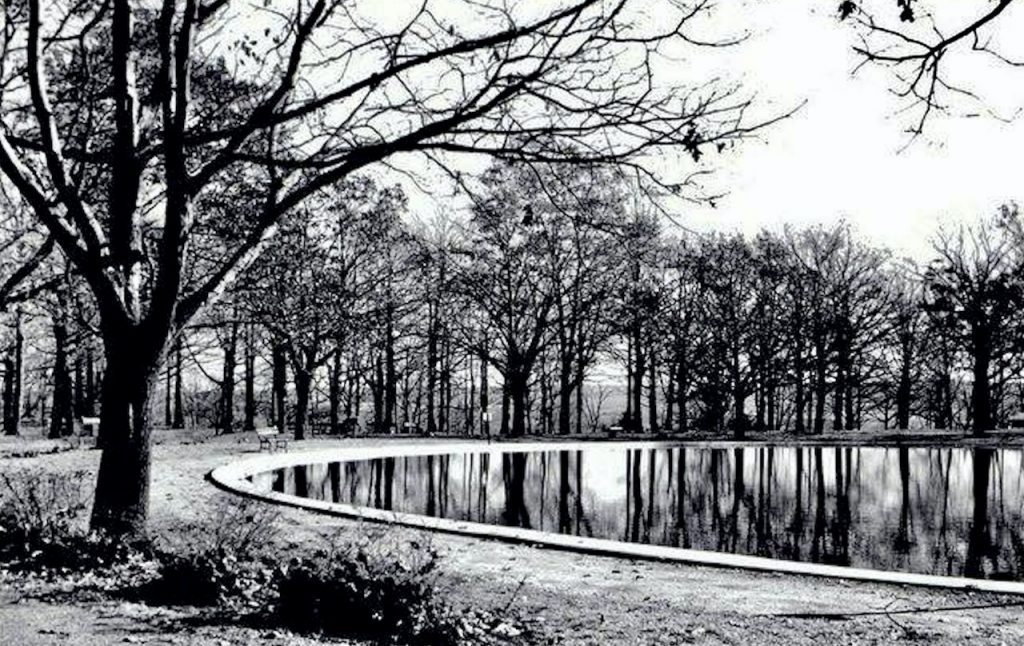
On July 10, 1902, the Watertown Daily Times would give a progress update–
The wading pool is a most popular spot, being dotted with appreciative children on all favorable days.Temporary shelters are to be at once erected, one for gentlemen at the concourse, where horses are hitched, and one for ladies in a convenient grove.
Either the latter part of this season or next a pagoda-shaped building, with conveniences for the public, will be erected near the wading pool. It will be of an ornate description, of large size and will cost several thousand dollars.
While the wading pool would be complete, crews were still hard at work adding the new walks around it, the large number of stone steps leading up the steep inclines, and a new walk between the tower drive and the north outlook. Four to seven tennis courts were planned and yet to be built, as was a man-made lake named High Down.
The Trident Model Yacht Club was formed in September 1902 and tripled its membership by the following year. The club held regattas at the wading pool, providing fun for both children and adult spectators. Some of the photos in the gallery, including the one below, show the children with their boats in the water.
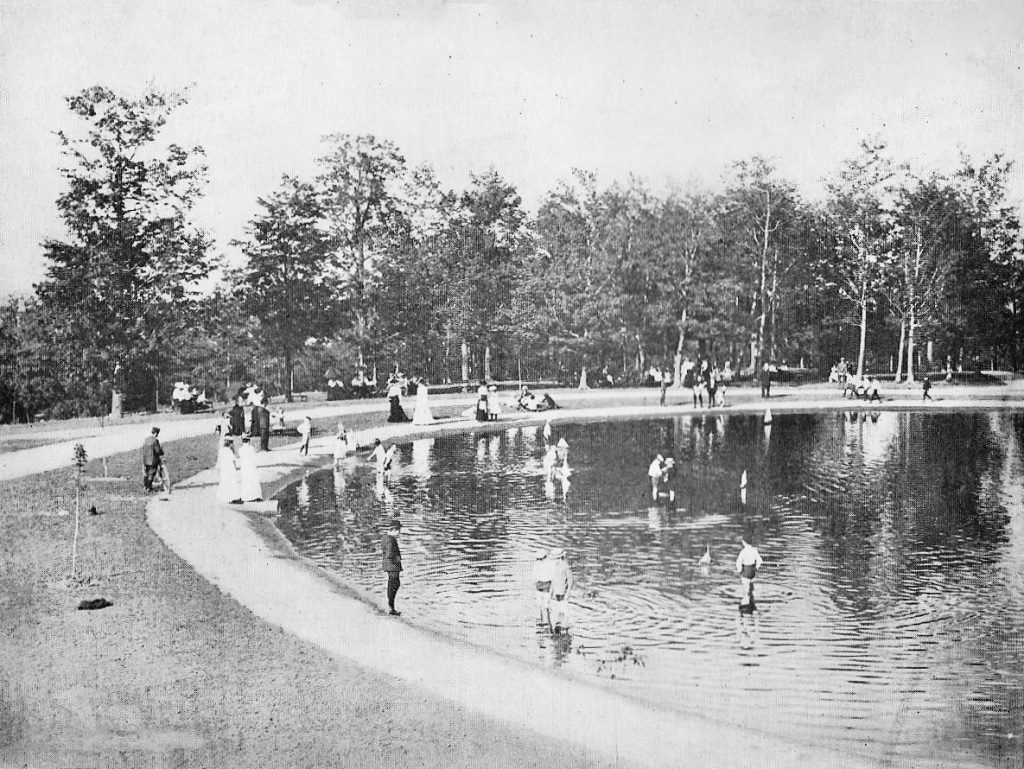
All in all, it was forecasted to be still several years worth of work still left to be done. Some of these plans, such as the estates known as Bonniebrae, were never built. They were to have existed to the west of Gotham Street and Washington Street behind where H. T. Wiley School is currently. The idea for these was to provide a source of income to the city to budget the park accordingly without burdening its citizens, much like the purchase of the American and Paddock Buildings by Emma Woodruff Keep-Schley was to provide a “perpetual” income to sustain the Henry Keep Home for decades via leases.
In 1975, plans were set into motion to replace the old water tower, which had been leaking for quite some time, with a new one. Unfortunately, the location they chose to build it would be the wading pool. In April 1978, construction would begin on the new 250,000-gallon water tower, marking the end of the wading pool’s 76-plus years as a landmark and gathering place at Thompson Park.
